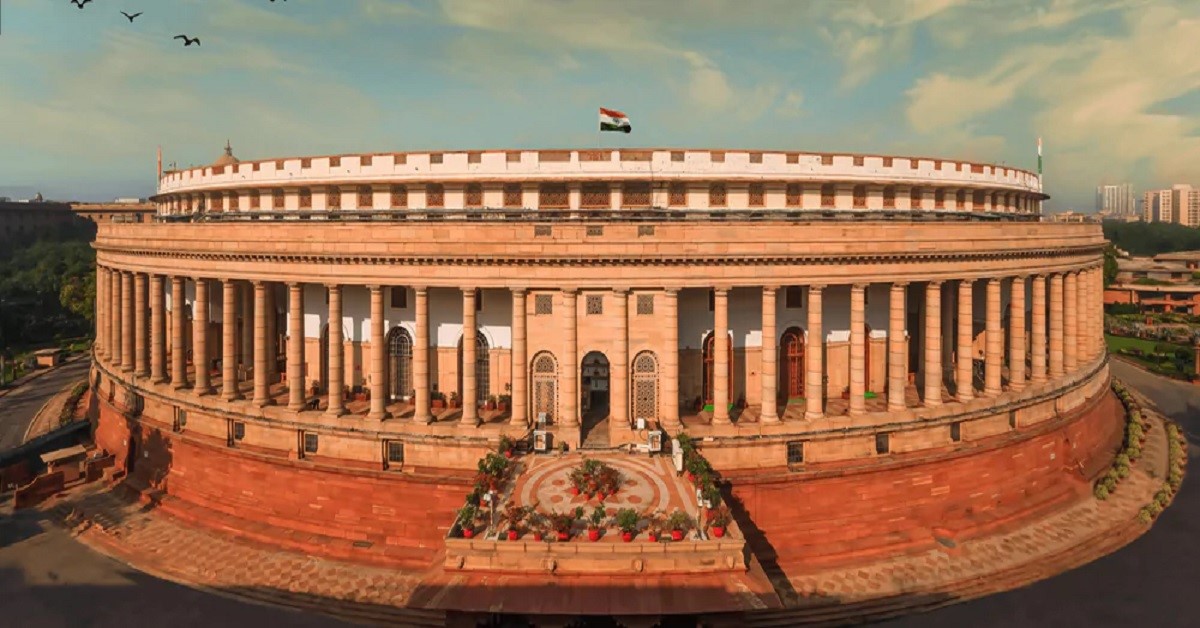Strengthening Parliamentary Oversight: Challenges and Reforms Ahead
“Strengthening Parliamentary Oversight: Challenges and Reforms Ahead”
Syllabus:
GS-2:
Parliament , Executive Representation of People’s Act , Government Policies & Interventions
Focus:
Recent discussions highlight the declining effectiveness of parliamentary oversight in India. With mechanisms like Question Hour and Standing Committees facing disruptions and limitations, experts stress the need for reforms to enhance transparency, accountability, and executive scrutiny in governance.
Historical Context and the Importance of Parliamentary Oversight:
- Constituent Assembly Debate: The Indian Constitution was framed after 167 days of deliberations in the Constituent Assembly. A significant debate was the choice of a parliamentary system. Dr. B.R. Ambedkar defended this choice, citing that a parliamentary system promotes responsibility over stability. He emphasized that this system allows for continuous executive accountability through questions, motions, and debates in Parliament, along with periodic accountability through elections.
- Role of Parliament: Parliament is designed not just to make laws but also to ensure their effective implementation and hold the executive accountable. The framework for this accountability includes Question Hour, Zero Hour, and Standing Committees.
The Current Oversight Mechanisms:
- Decline in Effectiveness of Parliamentary Oversight:
- Despite a robust structure, parliamentary oversight has faced challenges in recent years. Efficiency in governance should not come at the cost of transparency.
- Question Hour Disruption: Question Hour, intended as a daily check on government accountability, is often disrupted by protests and adjournments, reducing its effectiveness. During the 17th Lok Sabha (2019-24), Question Hour was operational only for 60% of its scheduled time in the Lok Sabha and 52% in Rajya Sabha.
- Focus on Isolated Queries: MPs often raise isolated questions instead of addressing broader, cross-ministerial issues that require systematic scrutiny. This diminishes the potential impact of questions in holding the executive accountable.
- Weak Committee Functioning:
- Parliamentary committees like the Department-related Standing Committees (DRSC) meet regularly and prepare detailed reports, but these reports are seldom discussed on the floor of the House.
- The lack of follow-up discussions on committee recommendations means that even well-researched reports have limited influence on legislation or government actions.
- Stakeholder Engagement: Committee consultations often involve a narrow range of stakeholders, raising concerns over the diversity and breadth of input into policy evaluations.
- Temporary Nature of Committees: The short-term nature of committee assignments limits the ability of members to gain deep expertise and institutional recognition, which weakens their long-term impact on oversight.
Notable Successes in Parliamentary Oversight:
- Positive Interventions:
- Despite the challenges, there have been several successful interventions through parliamentary oversight mechanisms:
- The Standing Committee on Railways recommended waiving Indian Railways’ dividend payments in 2015 to improve its financial health, a recommendation that was implemented in 2016.
- The Standing Committee on Transport influenced the Motor Vehicles Bill amendments in 2017, leading to the removal of caps on third-party insurance and the establishment of a National Road Safety Board.
- The Committee on Public Undertakings addressed delays in National Highways Authority of India (NHAI)-managed highway projects, recommending the commencement of projects only after 80% of land was acquired and necessary clearances were in place.
- The Public Accounts Committee (PAC) has consistently exposed inefficiencies and corruption, notably during the Commonwealth Games in 2010. On average, the PAC makes 180 recommendations annually, with 80% of them being accepted by the government.
- Impact on Legislation and Executive Action: These examples demonstrate that despite the limitations, parliamentary oversight can effectively influence government policy and improve governance when it operates effectively.
- Despite the challenges, there have been several successful interventions through parliamentary oversight mechanisms:
Reforms Needed to Strengthen Oversight Mechanisms:
- Post-Legislative Scrutiny:
- One major gap in the current oversight system is the lack of a formal mechanism to track whether laws achieve their intended outcomes. Laws are often passed, but there is no systematic process for evaluating their impact.
- Proposed Model: India can take inspiration from the United Kingdom, where government departments review major laws within three to five years after enactment. These reviews are then examined by parliamentary committees, allowing for timely course corrections.
- Subcommittees for Implementation Review: To close this gap, subcommittees could be created within existing Standing Committees or a specialized body to track the implementation of laws and provide feedback on their effectiveness.
-
Institutional Strengthening of Committees:
- Committees need to be institutionalized with permanent research and technical support to ensure more detailed and informed scrutiny.
- Public Engagement with Committee Work: Oversight findings should be made more accessible through translations in local languages, visual explainers, and short videos to ensure that the public is aware of and engaged with the work of parliamentary committees.
- Debates on Committee Reports: A select few Standing Committee reports should be presented for debate in Parliament, followed by mandatory responses from concerned ministers, ensuring that committee work actively informs parliamentary discourse and government accountability.
Leveraging Technology to Enhance Oversight:
-
Use of Technology in Parliamentary Work:
- MPs often lack specialized research staff or professional support to scrutinize complex policies or budgets. The large volumes of documents MPs must review, such as budget papers and audit reports, often overwhelm them.
- Proposed Technological Solutions: Leveraging Artificial Intelligence (AI) and data analytics can help MPs quickly identify irregularities, track policy trends, and generate sharper, evidence-based questions. Technology can also assist in the analysis of large datasets to improve decision-making.
- R. Narayanan’s Vision: In his 1993 inaugural address, the then Vice-President K.R. Narayanan highlighted that the goal of strengthening parliamentary committees was not to undermine the administration but to support it with more meaningful and constructive oversight.
- Future Outlook: A reformed, empowered Parliament with a robust oversight framework—supported by technology and institutional changes—will not only ensure better governance but also help fulfill the citizens’ mandate for transparency and accountability.
Conclusion:
In conclusion, strengthening parliamentary oversight in India is essential for ensuring transparent, accountable, and effective governance. While the existing oversight mechanisms have seen success in certain instances, they face significant challenges, including the disruption of Question Hour, limited engagement with committee reports, and inadequate scrutiny of legislation post-passage. To address these issues, targeted reforms, such as post-legislative scrutiny, the strengthening of committees, and leveraging technology, are critical. An empowered and effective Parliament is crucial for the realization of both ‘maximum governance’ and ‘maximum accountability,’ ensuring that the government remains answerable to the people it serves.
Source: TH
UPSC Mains Practice Question:
Discuss the challenges faced by parliamentary oversight mechanisms in India. Suggest reforms to strengthen their role in ensuring effective governance and accountability.





